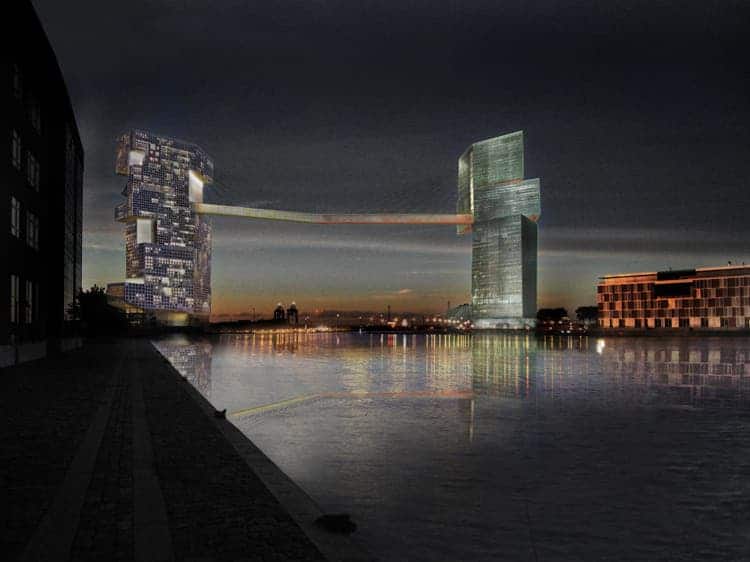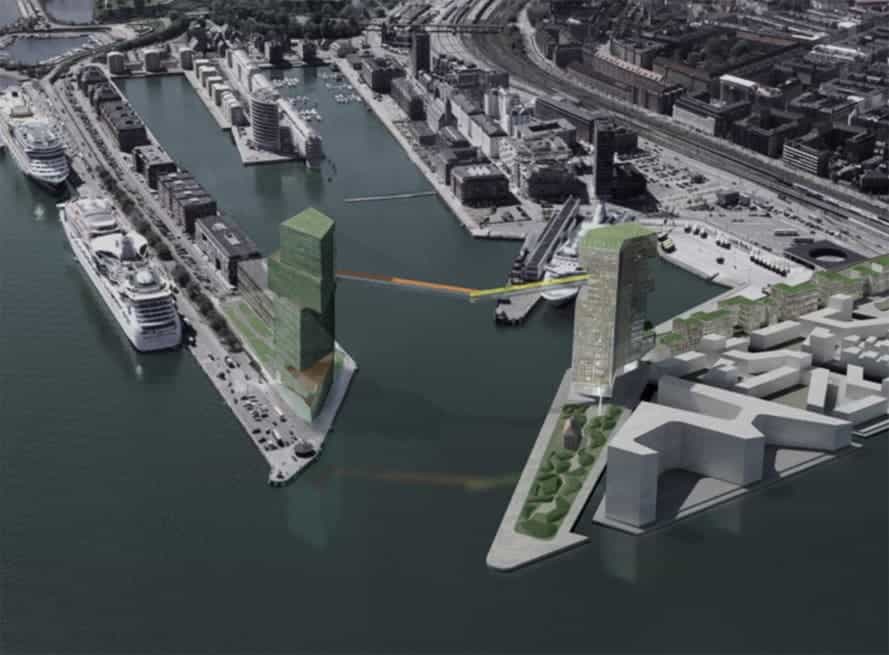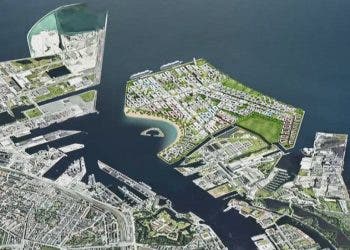The Danish capital of Copenhagen is known for its bike friendly culture but this time they’re taking it to the next level. Work is set to start on the new bike lane which will join two skyscrapers, 213 feet in the air (65 meters).

The design was the winner of a competition to reinvigorate the city’s skyline; the two towers will serve as a gateway to the city, one pointing to the sea, and the other to the city, signifying the past and future of the city. Between them, a bike lane will highlight the beautiful simplicity that often characterizes Copenhagen.
Each side of the bridge will support its own half, meeting in the middle, like a handshake above the sea. The towers themselves will be covered in solar screens and will feature wind turbines that will power the buildings’ entire lighting needs.

Perhaps the bike lane wouldn’t have been included in the plans at all, but the city has a law that every new home has to be less than 500 meters away from some sort of public transportation, and since the towers will also accommodate homes the law has to be respected. The architects who design it write:
“The design for the dramatic new harbor entrance to the great city of Copenhagen is based on a concept of two towers carrying two bridges at two orientations all connecting back to the unique aspects of the site’s history. The Langelinie site, a berth for ocean ships for decades, is expressed in the Langelinie tower, Gate L, with geometry taken from the site’s shape. A prow-like public deck thrusts out to the sea horizon. Gate L is expected to be furnished with cafes and restaurants. The Marmormolen tower, Gate M, connects back to the City.”



